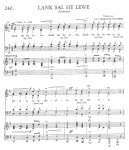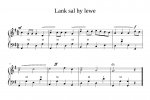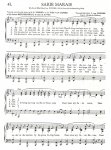Im posting this in The Pub, since its not strictly accordion specific.
I have recently started looking at rearranging some local folk songs for the accordion. The source Im working from is primarily for piano, or a melody instrument plus piano.
I know that harmony is a big topic in music education (which I dont have) so I am not expecting a miracle here. I am also aware that there are many resources available, both online and printed. However, I would like to know if there are any specific resources that anyone here can recommend that were useful when rearranging for stradella bass.
Heres what Ive been doing so far (some terminology might be wrong):
However, sometimes the available notes are too open (only 2 distinct notes that can match 2 or more chords), or I simply cannot figure out from 4+ notes what the actual chord is. In those cases I am not sure how to resolve the chord. Sometimes I will try it on the accordion to hear how it sounds and eventually pick one that sounds okay, but I would like to approach this with some more logic instead of just poking at the bass buttons.
Any suggestions or advice?
I have recently started looking at rearranging some local folk songs for the accordion. The source Im working from is primarily for piano, or a melody instrument plus piano.
I know that harmony is a big topic in music education (which I dont have) so I am not expecting a miracle here. I am also aware that there are many resources available, both online and printed. However, I would like to know if there are any specific resources that anyone here can recommend that were useful when rearranging for stradella bass.
Heres what Ive been doing so far (some terminology might be wrong):
- Keep in mind these are folk songs, so the bass side is usually just chordal accompaniment
- I prefer to keep the melody in tact and not use it to fill out weird chords on the bass side (and for now only a single voice)
- Keep in mind the chords for the diatonic key, e.g.: https://www.basicmusictheory.com/g-major-triad-chords
- Write out all the notes from both the melody and bass for each beat
- When the written out notes match a diatonic chord, I pick that chord
- When the notes do not match, I use this: http://www.scales-chords.com
- Then sometimes it will be an exact match for a non-diatonic chord (I might be wrong, and its actually just not a triad chord in the key)
- Other times it will only match a very, very rare chord, thats when I try to work out the non-chord tone (e.g. passing or neighbour)
- When I remove that tone it sometimes matches a known common chord, then I pick that
- When it is played bass-chord bass-chord, if I have a note repeating, I can change it into alternating bass (e.g. G GM G GM -> G GM D GM)
- I am not sure when to pick a counterbass note (maybe if I find a strange note together with a know chord and that note matches the surrounding counterbass?)
- At the end of a phrase where a note is sustained for a few beats I can try to add a little bass run (like the 3 notes in the corresponding chord)
However, sometimes the available notes are too open (only 2 distinct notes that can match 2 or more chords), or I simply cannot figure out from 4+ notes what the actual chord is. In those cases I am not sure how to resolve the chord. Sometimes I will try it on the accordion to hear how it sounds and eventually pick one that sounds okay, but I would like to approach this with some more logic instead of just poking at the bass buttons.
Any suggestions or advice?




